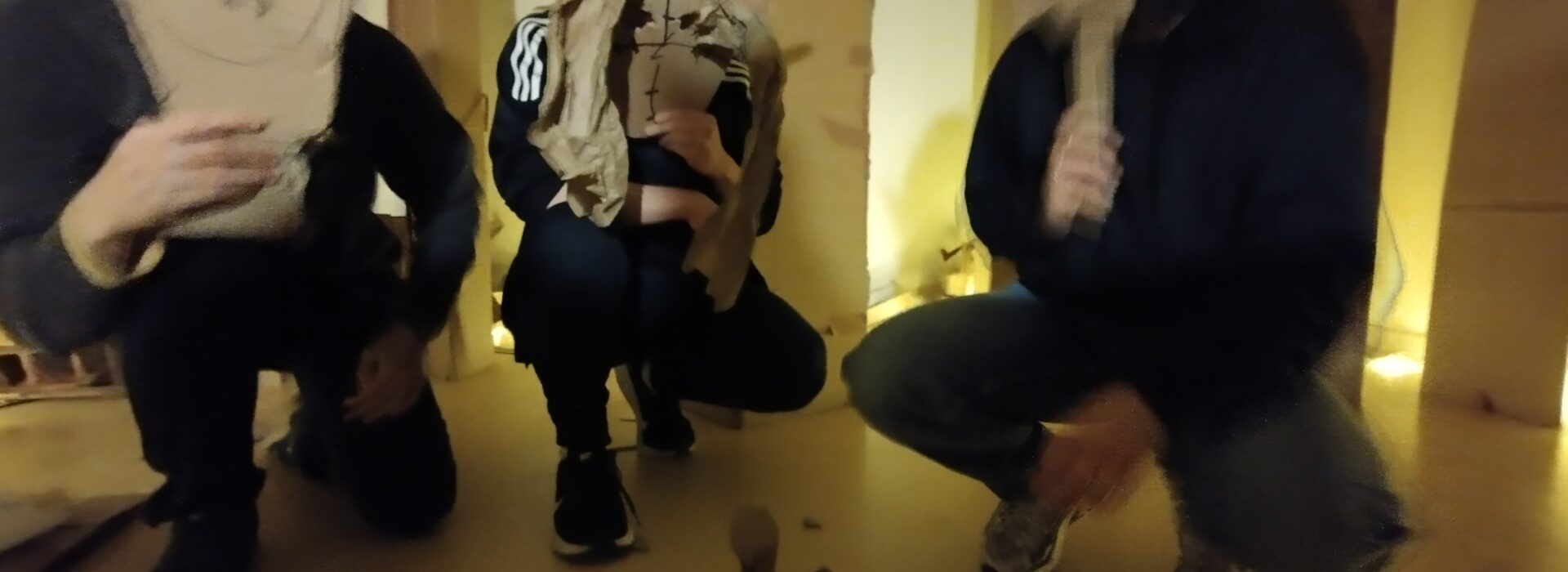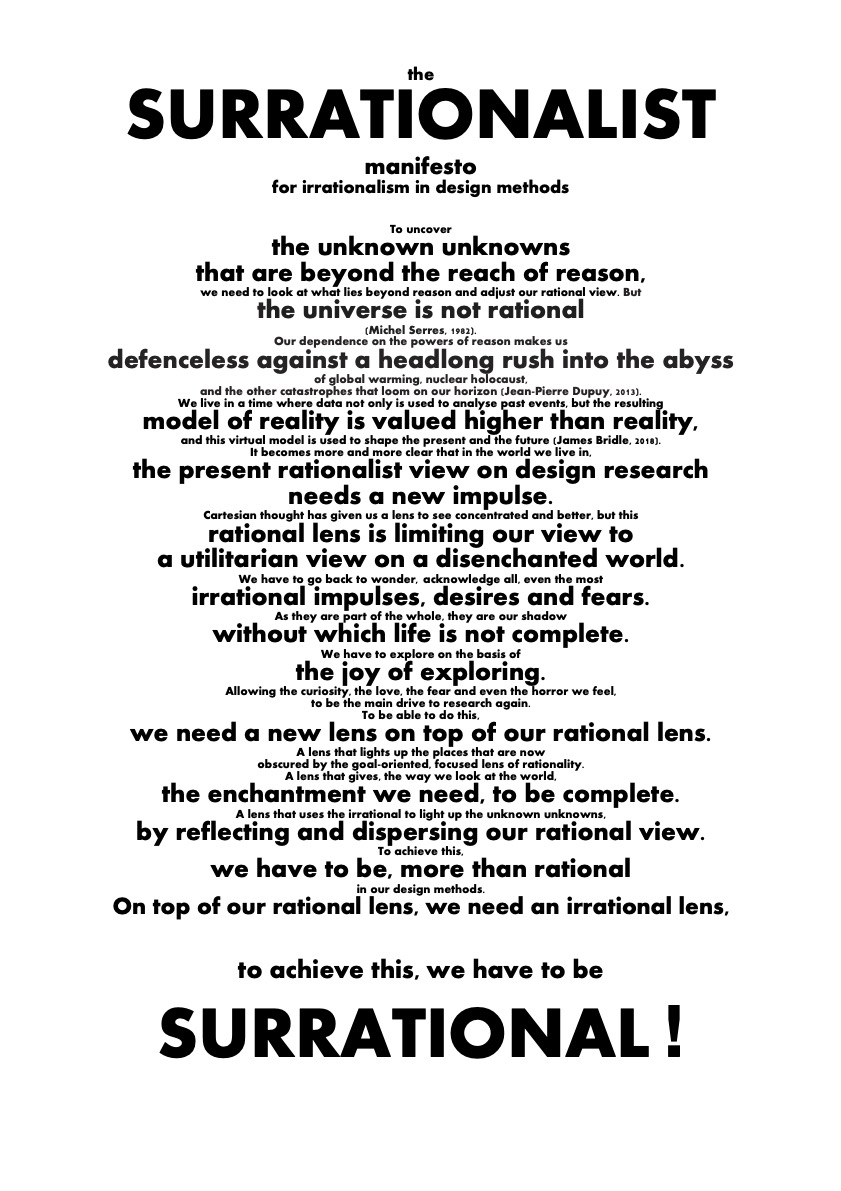Into the Unknown through Surrationalism


In recent years the aspect of ‘doing good’ in design has become an important aspect of design principles and research methods. This makes sense and seems very logical but seems to ignore the fact that we are not just rational and well-meaning beings. Very human traits like lust, envy and hate are mostly ignored in design methods. By ignoring this part of ourselves and rationally focusing on the purpose of the design, we not only reduce the world to a rational system, but we also create a blind spot for unintended unwanted effects of a design that are not within this scope. This blind spot is part of the Unknown Unknown (the things of which we do not know that we do not know them).
To reach this blind spot I designed a method that uses the appeal of undesired human urges in fiction and play, to uncover and mitigate unforeseen harmful effects of a design. With this method, called Creator Destroyer, a team of designers has to create a world and imagine mythical creatures that are part of the belief system of this world. Subsequently they have to make costumes to impersonate these creatures and as these creatures, think of ways to use their design to make life of the people living in this world miserable.

With the Creator Destroyer method, design teams did discover unkown aspects and possible consequences of their designs.
But from the reflections after the sessions a very remarkable insight arose. Although thinking as broad as possible is always part of the design methods these designers used, they felt that the rational purposeful aim of these current methods also caused them to narrow their view and the context, as these methods are mostly aimed at finding feasible solutions within the aimed setting.
This led me to my final design, a manifesto for the use of an irrational lens on top of the rational scientific lens in design methods, to uncover unknown unknowns: The SURRATIONALIST manifesto for irrationalism in design methods.
